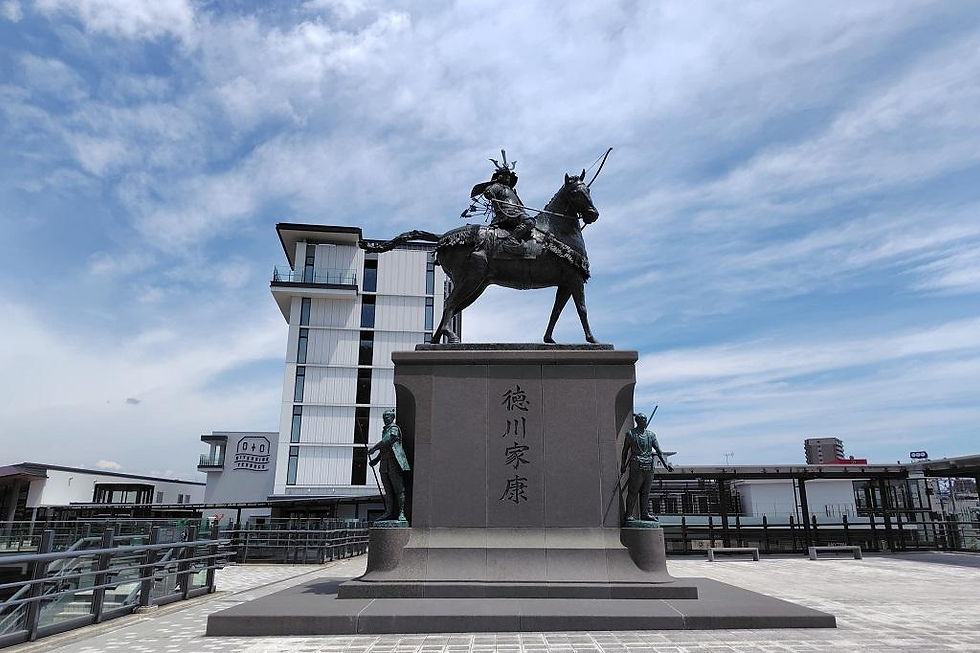Japan in Micronesia: A brief overview
- Tony Boccia
- May 4
- 3 min read
Greetings all, today we're going to look at a brief history of the history of Japanese expansion and wrap it up with a book recommendation. Enjoy!
One of the more interesting things I learned while stationed on Guam from 2022-25 is the history of the various colonial periods in the Marianas, which I always assumed was a pretty straightforward progression of native-Spanish-American-Japanese-American. Turns out, the Germans owned large parts of Micronesia in the early 20th Century, and lost them to Japan in the opening months of the First World War. To understand what the Japanese (largely bloodless) conquest of Micronesia meant to the United States, you just need to look at a map. While the Germans did not have many officials in Micronesia, it's the breadth of the area that's impressive. From the Marianas to New Guinea and the Solomons, the German Empire at this time controlled an enormous section of the Pacific, and islands that would be household names during the Second World War.

Wrapped up as they were fighting a two-front war, the Germans could do nothing as the Japanese conquered their island territories across the Pacific. Following this conquest, the Japanese wasted no time in making these islands part of the larger empire. Several parties looked at this development with alarm. Britain, Japan's ally, wanted the Japanese to wait until a peace conference at the end of the war could determine ownership of various colonies and mandates. Australia and New Zealand did not want to compete with the Japanese for the various colonies, or have a potentially aggresive foreign power on their doorstep. The United States, looking at its tenuous line across the Pacific from San Diego to Manila, was alarmed at having a large Japanese presence within a day's sail of Hawaii, and a few hours from Guam.
An agreement was reached in principle with Britain with regard to these territories in the spring of 1917; in return for British and Commonwealth recognition of Japan's claims in Micronesia, the Imperial Japanese Navy would provide convoy escort and anti-submarine duty in the Indian Ocean and Medditeranean Sea to protect Allied troop movements. The Americans, who were not invited to this secret convention among nominal allies, were suddenly surrounded on all sides by a potentially hostile and capable power. The full effect of this is obvious when we look at a map of the Pacific Mandates, set out after the Paris Peace Conference in 1919.

In a stroke, the Japanese had taken posession of seven million square kilometers from Jaluit Atoll to Palau, and Saipan to Kapingamarangi. Japan was also in control of several important strategic locations such as the anchorage at Truk Lagoon and the phosphate mines of Angaur. In the opening days of the Second World War, it was quite easy for the Japanese to attack Guam from Saipan, and the Philippines from Palau, in addition to threatening Hawaii from Kawajalein. At the end of the war, of course, the Japanese lost their control of the west-central Pacific nearly as quickly as they gained it.
The history of Japan in Micronesia, however, is more than just military expansion and loss. The colonization of these islands moved quickly under the efficient Japanese bureaucracy; schools, hospitals, and trading networks were established and expanded. Great Japanese men of the era who have since slipped from the national consciousness such as Mori Koben and Matsue Haruji rose to prominence here. And finally, perhaps most importantly, the national identities of the people of Micronesia, always at risk and under threat during times of colonization, continued to fade away as they were marginalized under the new Japanese system.
A quick perusal of news stories from the Commonwealth of the Northern Mariana Islands, Guam, and the Federated States of Micronesia will show you that what we're discussing in this blog post is not just history but also current events; the withdrawal of the Japanese in 1945 did not solve many of the problems that existed before 1914, and the work of de-colonization and legitimacy remains to be done.
If this is the kind of thing that interests you, read more about all this and more in Mark R. Peattie’s masterwork ‘Nan’yo: The Rise and fall of the Japanese in Micronesia 1885-1945’. From the beginning of Japanese expansion in the late 19th century to the end of the Pacific War, every detail of the history is laid out in an easily understood manner. Pick this one up; you won't be disappointed.





Comments